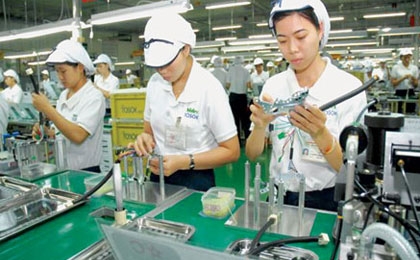One hand to build efficient road to FDI

illustration photo
Vietnam may set up a national-level body to manage foreign direct investment until 2020.
At last week’s workshop discussing the Ministry of Planning and Investment’s (MPI) new draft foreign direct investment (FDI) attraction strategy until 2020, the MPI’s Foreign Investment Agency director Do Nhat Hoang said Vietnam would manage FDI by a concentrated national-level coordination body, instead of the existing decentralisation model.
The draft strategy would be officially discussed by the government in early October 2012 and then a resolution on the nation’s FDI attraction until 2020 would be issued.
The draft strategy comprises some different solutions, also known as models, about state management of FDI. Among the models was one that received wide praise from workshop participants. This model called for the establishment of an FDI steering committee led by a deputy prime minister, with the MPI minister as vice chair and representatives from leaders of some ministries and sectors.
According to the draft strategy, this model will “help prevent [localities’] breaking the government’s FDI attraction regulations, and ensure wishlist projects must be suitable to the national socio-economic development strategy and planning of industries.”
“We agree with this model. The committee means a connection between the government, the MPI and localities in managing FDI. It will help the government and the MPI know what localities are doing with FDI projects,” said Nguyen Quoc Hung, vice head of the Government Office’s International Relation Department.
“This model will also help improve localities’ FDI attraction quality, meaning that localities must be responsible to the government for FDI projects they lure,” said Ngo Sy Bich, head of Bac Ninh Provincial Industrial Parks Management Authority.
“I think the committee should have periodical meetings to review local FDI attraction plans and results,” Hung said.
However, MPI Deputy Minister Dao Quang Thu said though this model had virtues, the government and MPI must “carefully study it” before coming to a final decision.
“The existing FDI management model is greatly problematic and needs changing. But how to change it now and apply a new FDI management model remains in question,” he said.
From 1987 when Vietnam’s first Foreign Investment Law was enacted to mid-2004, FDI into the country was managed wholly by the government. However, the government in 2004 issued Resolution 08/2004/NQ-CP dated June 30, 2004 on boosting decentralised administration between the government and local authorities in provinces and cities under the central rule, under which localities are enabled to lure and manage FDI.
“However, this mechanism has prompted localities to massively coax FDI at any cost, without any focus on environmental protection and attracting high technology, while the government’s prime targets of coaxing high technology and generating employment via FDI have totally collapsed,” Hung said.
“For instance, golf courses are booming in many localities and many localities licenced foreign forest plantation projects but the government did not know about that,” he said.
From 1987 to July 31, 2012, Vietnam licenced more than 14,000 FDI projects worth $206.3 billion, of which $96.6 billion was disbursed. FDI projects were largely focused on construction and industry sectors (54.8 per cent of registered capital), services (40 per cent) and agro-forestry-fisheries (1.6 per cent).
What the stars mean:
★ Poor ★ ★ Promising ★★★ Good ★★★★ Very good ★★★★★ Exceptional
 Tag:
Tag:
Related Contents
Latest News
More News
- Unpacking new momentum in Vietnam’s M&A market (December 10, 2025 | 09:59)
- Forum honours outstanding M&A deals, strategies, and advisory firms (December 09, 2025 | 18:22)
- Vietnam enters defining phase of M&A growth (December 09, 2025 | 17:00)
- Vietnam’s M&A market opens new opportunities amid strong economic momentum (December 09, 2025 | 15:00)
- Vietnam M&A Forum 2025: new position, new momentum (December 09, 2025 | 14:30)
- FDI in Vietnam jumps on additional capital and share purchases (December 09, 2025 | 13:56)
- VIR gathers dealmakers for M&A forum (December 08, 2025 | 17:17)
- Vietnam steps up green transformation with strong policies and rising investment demand (December 06, 2025 | 12:07)
- Listed companies honoured for information transparency (December 06, 2025 | 11:59)
- CSI 2025 highlights rise of Vietnam’s green champions (December 06, 2025 | 09:00)
























 Mobile Version
Mobile Version